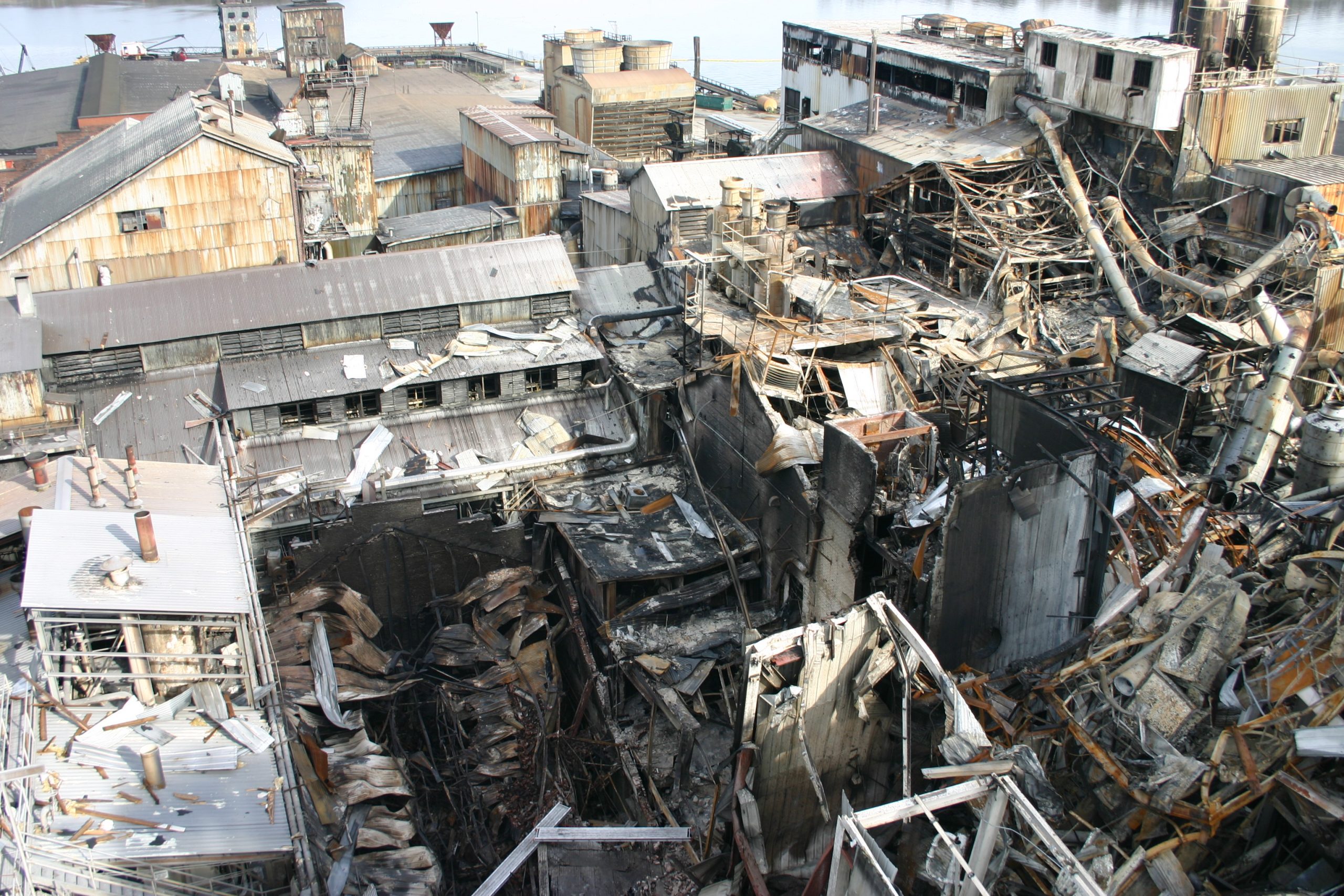The Worst Dust Explosions In The United States
Many industries involve materials that are not usually combustible or flammable, but can become dangerous when they become fine particles fluttering in the air. Throughout history, especially in conjunction with hot machinery, combustible dust management has become an important consideration for businesses and individuals. The following combustible dust incidents could have been prevented with better dust management.

Imperial Sugar
One of the most dangerous incidents in the early 2000s happened in Savannah, Georgia in 2008. The problem is reported to stem from leaks in the manufacturing equipment that allowed sugar to pile up–sometimes knee-deep– on the floors and other surfaces. For a quick clean-up, workers would use compressed air to send the sugar flying, which allowed it to accumulate nearly everywhere, including within an enclosed conveyor belt. An overheated bearing set this dust aflame, causing the deaths or injuries of over 50 workers and rocking the whole facility into an unusable wreck. The risk of this sugary explosion could have been mitigated with proper upkeep to the manufacturing machines and regular cleaning of the whole facility.
Didion Milling
In 2017, an explosion in Didion Milling Inc., which primarily ground corn and grains, killed 5 and injured 12 workers, leading to serious litigation. The reported cause is a failure to maintain processing equipment correctly, which allowed a pileup of highly combustible grain dust. Similar to the Imperial Sugar incident ten years prior, a lack of cleanliness also played a role. Additionally, emergency systems were not in place to prevent static electricity, provide emergency shut-down and alarms, or maintain safety controls.
West Pharmaceutical Services
A simple medical supply factory found itself in a tragic situation when plastic powder that is one of the byproducts of producing rubber stoppers accumulated above the suspended ceiling of the plant. A huge explosion was felt throughout the area when the layer of dust on the ceiling tiles caught fire, causing the deaths of 6 workers and injuring nearly 40 others. Unsurprisingly, regular cleaning and maintenance could have gone a long way in mitigating this disaster. Since this incident, unsealed ceiling tiles have been banned from manufacturing spaces, since it’s too easy for dust to heap up in just such a confined area.
Dust explosions can occur in nearly any industry. These and dozens of other serious combustible dust incidents have caused the US Chemical Safety and Hazard Investigation Board, or the CSB, to provide more clear guidelines for appropriately implementing combustible dust management in order to prevent further injury to personnel and property.
